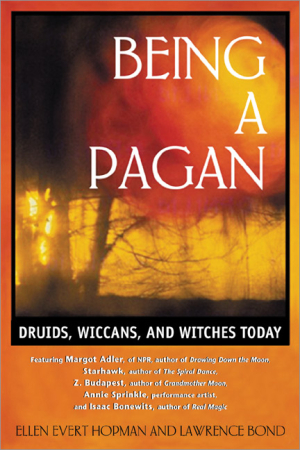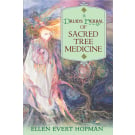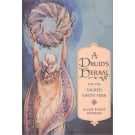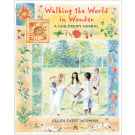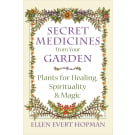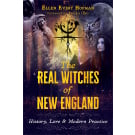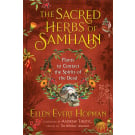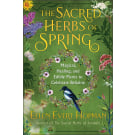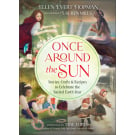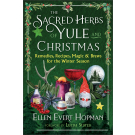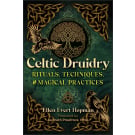Being a Pagan
Druids, Wiccans, and Witches Today
- Edition: New Edition of People of the Earth
- Pages: 392
- Book Size: 6 x 9
- ISBN-13: 9780892819041
- Imprint: Destiny Books
- On Sale Date: November 1, 2001
- Format: Paperback Book
More than 60 pagan leaders and teachers describe in their own words what they believe and what they practice.
• Addresses how Pagans view parenting, organized religion, and politics.
• Introduces the wide range of possibilities within the neo-Pagan movement.
• By Ellen Evert Hopman, author of A Druid's Herbal for the Sacred Earth Year; Walking the World in Wonder: A Children's Herbal; and Tree Medicine, Tree Magic.
Who are the pagans and what do they stand for? Why would some of the members of the best educated, most materially comfortable generation of Americans look back to mystical traditions many millennia old? During the last few decades, millions of people have embraced ancient philosophies that honor Earth and the spiritual power of each individual. Ways of worship from sources as diverse as the pre-Christian Celts, ancient Egypt, and Native American traditions are currently helping their followers find meaning in life while living in the Information Age.
In this book Pagan leaders and teachers describe in their own words what they believe and what they practice. From Margot Adler, an NPR reporter and author of Drawing Down the Moon, to Isaac Bonewits, ArchDruid and founder of a modern neo-Druidic organization, those interviewed in this book express the rich diversity of modern Paganism. Hopman's insightful questions draw on her own experiences as a Pagan and Druid as well as on her extensive research. With coauthor Lawrence Bond, she examines how Pagans address such issues as parenting, organized religion, and politics. The resulting dialogues illuminate the modern Pagan revival.
Page 309
Whether the emotions are planted in an abstract picture or a realistic picture, it doesn't really matter, they are there. This took quite a while for me to accomplish; it happened after I left school.
Now I was free to just think about things, and they would naturally just come out. What I thought about were themes related to Paganism--erotic themes, joyful themes, and beauty. Not the ethereal joy of ascending to heaven but the earthy joys of being with a woman here on the earth, the joys of a sunset, the joys of walking among trees and the shading that you get in the area between the forest and the field. The feeling that you get being between the light and the shadow. These are marvelous, subtle things.
These are to my mind very much Pagan-related themes because they involve the earth and the mind and the feelings and emotions, not on an intellectual level but rather on an emotional and gut-feeling level.
How has being a Pagan affected the mundane aspects of your life?
One way it has affected my life is that a long time ago I made a deliberate decision to remain childlike in my outlook on life. Not childish, childlike. It's a somewhat simple outlook, somewhat naive, but it enables me to look at things clearly for the art; it goes into the art and affects it. My friend Oberon G'Zell is very childlike in his outlook on the world. This is a very Pagan way of being, in the sense that we can find wonder and joy in what we see. A lot of the themes in the art work are Pagan themes--for example, there is a piece called Welcome to the Wood, which shows the Horned God, Cernunnos, the antlered God of the forest who dies every winter and is reborn in the spring.
We naturally find ourselves discussing these topics with the customers who buy our artwork. Some people come up to us at the Renaissance fair, and when they see a horned God they say, "Ooh! The Devil!" They want to know why we have painted a picture of the Devil. You can see that they have been misled by the Judeo-Christian thought that anybody with horns is a representation of Satan. So we tell them that it's not the Devil or Satan; it's a God from a different mythology than theirs.
Our personal lives are going to be affected when the Tarot deck comes out. A long time ago a man named Bruce Peltz, a big science fiction fan, decided that he would get a whole bunch of science fiction artists and have each of them do a part in a Tarot deck. I was one of the people he approached, and I did a card of the Three of Swords. This was just about the time I had learned to read Tarot. I began thinking that I should do a deck of my own. The Tarot is full of Jungian archetypes and other marvelous things, and no artist, in my opinion, can look at the deck for any length of time without thinking how they would do this or that card.
Foreword by Richard Kaczynski, Ph.D.
Preface
Acknowledgments
The New Druids and the Celtic Revival
The Wiccan Tradition
The Faery Faith
Paganism from Norway, Greece, Egypt, Israel, and Italy
Goddess - centered Paganism
Sacred Prostitutes
Pagans and the Politics of Persecution
Military Pagans
Pagan Students
The Church of All Worlds
Circle Sanctuary
The Covenant of the Goddess
The Earthspirit Community
The Covenant of Unitarian Universalist Pagans
Pagan Artists
Writers
Sources and Resources
PanGaia: Living the Pagan Life
"Being a Pagan is well researched and offers a panoramic outlook on a growing spiritual movement offering hope for our Earth."
New Age Retailer
"The collection is refreshingly unlike other spiritual self-discovery books because it is not a how-to, but instead an oral documentation of actual practice, thus providing an extremely valuable historiography of paganism."
Small Press
"Hopman and Bond are evenhanded in their treatment of each individual expression of paganism, never setting one against the other. Their biases never show, which in itself is quite a feat. The questions asked are pertinent and probing. If you are not a pagan, this book is definitely for you. It does not seek to convert, only to inform and challenge your own faith, or lack of it. For both pagan and non-pagan, if nothing else, it will change your understanding of what it means to call oneself 'pagan.'"
Brigit's Feast
"I cannot begin to describe how much I enjoyed this book! Being a Pagan made my December Top Ten list, and I firmly believe that this is a volume every witch should own. Containing dozens of interviews with every major leader of the modern Pagan movement, representing an equal number of paths, Traditions and perspectives, Hopman and Bond have created an invaluable resource for anyone interested in Earth-Based Spirituality."
Stefani Barner, The Pagan Activist, Feb 2007
“In my personal journey through Being a Pagan I find many of the dimensions of those interviewed in this book relevant to my own journey. The stories/interviews of this book helped me define myself as a pagan/shaman. It is an important read for others in helping them find their place in the world of the coming New Age and in their relationship to paganism and witchcraft.” Nick Brink, author of The Power of Ecstatic Trance
“This book should appear on the suggested reading list given to any student on a Pagan path.”
--PanGaia: Living the Pagan Life
“Being a Pagan is well researched and offers a panoramic outlook on a growing spiritual movement offering hope for our Earth.”
--New Age Retailer
Who are the Pagans and what do they stand for? Why would some of the best educated, most materially comfortable generation of Americans look back to mystical traditions many millennia old? During the past few decades, millions of people have embraced ancient philosophies that honor Earth and the spiritual power of the individual. Ways of worship from sources as diverse as the pre-Christian Celts, ancient Egypt, and Native American traditions are currently helping their followers find meaning in life. Ellen Evert Hopman’s own spiritual search led her down one of the most ancient religious paths and inspired her to seek out others who had discovered Paganism.
In this book more than sixty Pagan leaders and teachers describe in their own words what they believe and what they practice. From Margot Adler, NPR reporter and author of Drawing Down the Moon, to Isaac Bonewits, ArchDruid and founder of a modern neo-Druidic organization, those interviewed in this book express the rich diversity of modern Paganism. Hopman’s insightful questions draw on her own sixteen years of experience as a Pagan and Druid and result in fascinating profiles that illuminate the modern Pagan revival. With coauthor Lawrence Bond, she examines the influence of Paganism on society--and society’s influence on Paganism--with particular attention to how Pagans address such issues as parenting, organized religion, and politics. Being a Pagan unites many Pagan voices in a panoramic view of one of today’s most dynamic spiritual movements.
ELLEN EVERT HOPMAN was vice president of The Henge of Keltria, an international Druid Order, for nine years. She is a founder of The Order of the Whiteoak (Ord Na Darach Gile), also an international Order of Druids, and a professional member of the American Herbalists Guild. She is also the author of A Druid’s Herbal for the Sacred Earth Year and Walking the World in Wonder: A Children’s Herbal. She lives in Massachusetts. LAWRENCE BOND is a teacher, storyteller, designer, and illustrator who specializes in art and tales from the Celtic pantheon. He is also the art director of the Folk & World music magazine Dirty Linen.



